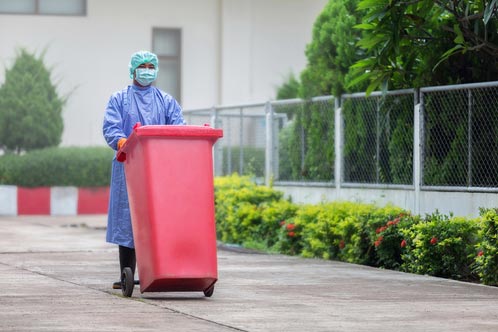Navigating the complexities of medical waste disposal regulations is crucial for healthcare facilities to ensure both legal compliance and public safety. Medical waste disposal regulations govern how medical waste should be managed, transported, and disposed of to minimize risks to human health and the environment. In this step-by-step guide, we will walk you through the key steps to comply with medical waste disposal regulations effectively.
Understanding Medical Waste Disposal Regulations
Medical waste includes any waste generated during medical, dental, or veterinary activities that could be infectious, hazardous, or pose other risks. This encompasses items like used needles, contaminated dressings, discarded surgical instruments, and lab waste. Medical waste disposal regulations are designed to ensure that this waste is handled safely and disposed of properly to prevent exposure to infectious diseases and harmful chemicals.
Step 1: Identify and Classify Medical Waste
The first step in complying with medical waste disposal regulations is to identify and classify the types of medical waste generated by your facility. Medical waste is typically classified into categories such as:
- Infectious Waste: Waste contaminated with blood, bodily fluids, or other potentially infectious materials.
- Sharps Waste: Used needles, syringes, and other sharp objects that can cause injury.
- Pathological Waste: Human tissues, organs, and body parts.
- Pharmaceutical Waste: Expired or unused medications and vaccines.
- Chemical Waste: Discarded chemicals and reagents used in medical procedures.
Step 2: Implement Proper Segregation
Proper segregation of medical waste at the point of generation is crucial for compliance with medical waste disposal regulations. Use color-coded containers and bags to separate different types of waste:
- Red Bags: For infectious waste.
- Yellow Containers: For sharps waste.
- Blue or White Containers: For pharmaceutical waste.
- Black Containers: For chemical waste.
Ensure that all staff are trained to use the correct containers to prevent cross-contamination and ensure safe disposal.
Step 3: Use Approved Storage and Containment
Medical waste must be stored in approved containers that are leak-proof, puncture-resistant, and labeled with biohazard symbols. Containers should be kept in designated storage areas that are secure, well-ventilated, and inaccessible to unauthorized personnel. Regularly inspect storage areas to ensure containers are not overfilled and are in good condition.
Step 4: Arrange for Licensed Transportation
Transportation of medical waste must comply with specific regulations to ensure safe and legal transit. Work with licensed medical waste disposal companies that have the necessary permits and training to handle, transport, and dispose of medical waste. Ensure that all waste is properly packaged and labeled before transportation.
Step 5: Ensure Proper Treatment and Disposal
Medical waste must be treated to render it non-infectious and safe for disposal. Common treatment methods include:
- Autoclaving: Using steam to sterilize infectious waste.
- Incineration: Burning waste at high temperatures to destroy pathogens.
- Chemical Treatment: Using chemicals to disinfect waste.
After treatment, waste can be disposed of in designated landfill sites or other approved disposal facilities. Verify that the disposal facility complies with all relevant regulations and provides documentation of waste treatment and disposal.
Step 6: Maintain Accurate Documentation
Accurate documentation is essential for compliance with medical waste disposal regulations. Keep detailed records of:
- Types and quantities of medical waste generated.
- Dates of waste collection, transportation, and disposal.
- Names and credentials of waste disposal service providers.
- Treatment methods and disposal locations.
Regularly review and update records to ensure accuracy and compliance.
Step 7: Train Staff and Conduct Regular Audits
Ongoing training for all staff involved in waste management is vital for maintaining compliance. Conduct regular training sessions on waste identification, segregation, storage, and emergency procedures. Additionally, perform periodic audits of your waste management practices to identify and address any areas of non-compliance.
Complying with medical waste disposal regulations is a critical responsibility for healthcare facilities. By following these step-by-step guidelines—identifying and classifying waste, segregating properly, using approved storage, arranging for licensed transportation, ensuring proper treatment and disposal, maintaining accurate documentation, and providing ongoing training—you can ensure your facility remains compliant and contributes to a safer environment. Proper management of medical waste not only protects public health but also enhances the reputation of your healthcare facility as a responsible and compliant entity.





Comments